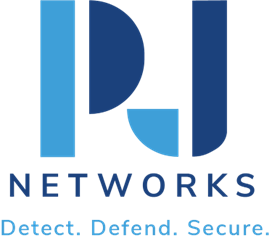How to Safeguard Remote Workforces Against Cyber Threats
Let’s face it, as remote work becomes part of the new normal, it’s critical we address the challenges surrounding cyber threats and bolster our security frameworks. Whether you’re managing a small team or an entire company, ensuring everyone’s work tools, communication channels, and data are secure is key. We’ll dive into what you need to watch out for and how you can up your security game.
Cyber Threats to Remote Workers
Remote work is blissful until you realize how vulnerable your network can be. Being away from the office network leaves employees exposed to an array of cyber threats.
- Phishing Attacks: Fake emails or websites that trick employees into giving away confidential info.
- Malware and Ransomware: Malicious software that can lock your files until you pay up.
- Unsecured Wi-Fi Networks: Home or public Wi-Fi without proper security can be a hacker’s playground.
- Weak Passwords: Easily guessable passwords are an open invitation to cyber criminals.
These threats can severely impact business operations. Staying vigilant on these common pitfalls can go a long way in protecting your remote team.
Remote Security Best Practices
Here’s how you and your team can stay protected:
- Use Strong Passwords: Encourage the use of complex passwords or passphrases. Change them regularly.
- Implement Multi-Factor Authentication (MFA): Add an extra layer of security beyond the password.
- Secure Home Networks with a VPN: Encrypt employee internet traffic with a Virtual Private Network.
- Regular Software Updates: Keeping software and systems up to date patches vulnerabilities.
We must implement these best practices consistently for them to be effective. Everyone has a role to play in maintaining security.
Tools for Securing Remote Employees
Investing in top-notch security tools is essential. Here’s what we’d recommend:
- Endpoint Security: Protect devices like laptops and smartphones with antivirus and anti-malware software.
- Cloud Security Solutions: Ensure that your cloud services have robust security protocols.
- Firewalls: Personal firewalls can keep unauthorized traffic out of your devices.
- Security Awareness Training: Educate your team about the latest threats and how to recognize them.
These tools and measures will help create a secure virtual workspace for everyone.
Case Studies
Let’s look at how some companies handled cyber threats.
Case Study 1: Tech Co.
Before implementing comprehensive endpoint security, Tech Co. experienced multiple phishing attacks. After training employees and deploying cloud security tools, they saw a 60% drop in incidents—demonstrating the power of preparedness.
Case Study 2: Retail Inc.
Retail Inc. faced a ransomware attack that encrypted their files. Learning from this, they enabled MFA and used VPN for all remote networks. They now use continuous monitoring to stay ahead of threats and have successfully mitigated further risks.
Both scenarios illustrate how vital it is to have a proactive strategy.
Wrapping up, safeguarding your remote work environment against security threats is not a one-time task but an ongoing effort. By understanding potential consequences and implementing the right practices and tools, we can ensure our workforce remains safe. Remember, the safety and effectiveness of remote work lie in a well-guarded security framework.
The need to protect against cyber threats and enhance endpoint security will only continue to grow. Let’s prioritize security today!
